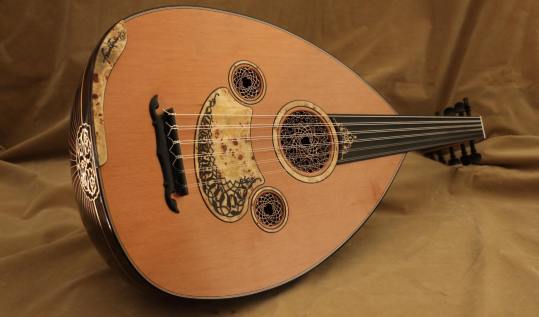|
Ásgeir Ásgeirsson is an Icelandic player of bouzouki, saz and more. Since 2017 he has been creating a big, beautifully executed project: a trilogy of albums of Icelandic folk songs and melodies from Bjarni Thorsteinsson's 1905 collection, interpreted and developed from the perspective of the traditions of Turkey, Bulgaria and Iran. Featuring top musicians from those places, with the songs largely performed by Icelandic singer Sigríður Thorlacius, they were recorded in studios in Iceland, Bulgaria, Greece, Turkey, the Netherlands, Iran and India.
2020 brings the final album, an Iranian one, Icelandic Folksongs Volume 3, Persian Path, so I'll start with that.

|
|
""
|
Its instrumentation comprises a rich orchestral blend of qanun, santur, oud, ney, kamanche, qeychak, setar, violin, cello, percussion and Ásgeirsson's instruments which here include touches of guitar synth. They mould themselves to the Icelandic material, elaborating and extending it with arrangement and composition by Ásgeirsson and the players. The result is a sweeping, indeed epic, flow of melodies. In the tracks that have a vocal, Thorlacius sings in a clear, serenely elegant style; un-ornamented but with slight vibrato, it isn't the earthier way in which these songs were once probably sung, nor is it middle-eastern, nor overly western-classical, it bridges between cultures. In the final track she's joined by the fine voices of male singers Samin Ghorbani and Egill Ólafsson.
So, inspired by this latest release, let me present its two predecessors.

|
|
""
|
Volume 1, Two Sides Of Europe, is a meeting between the Icelandic melodies and Turkish rhythms, microtonal maqam scales and instrumentation. The team is a smaller, but very classy one, making a beautiful soaring, slithering ensemble sound: Göksel Baktagir's rippling, chiming qanun, Oray Yay's resonant, ringing hand-drumming, the velvety keening of Derya Türkan's kemençe which, though a bowed-string instrument, he gives an almost ney-like, breathy quality, Ásgeirsson's gutty oud and, on three of the eight tracks, singer Thorlacius.

|
|
""
|
In Volume 2, Travelling Through Cultures, as before there are new melodies, links and improvisations by Ásgeirsson, who here adds trilling tamboura to his oud and bouzouki. Bulgarian accordionist Borislav Zgurovski worked with him on the arrangements as well as playing, and it features Bulgarian masters of the traditional instruments kaval (Temelko Ivanov), gadulka (Borislav Galabov), gaida (Radostin Rusev), bass and tupan drum, plus on the final track with a classic gorgeous Bulgarian female choir. Thorlacius's voice, certainly un-Bulgarian in its rounded tone, brings an unusual dimension to this context, as with the other albums, and the Icelandic songs and tunes entice very characteristically Bulgarian sounds, modes and asymmetric rhythms into novel melodic areas, and it all coheres remarkably well.
There's an apposite quote (and interesting, being way back in 1905) from Bjarni Thorsteinsson in the liner notes: “The folk music of a people is not only the indigenous songs handed down from one generation to the next, but no less that – despite a foreign origin – have taken on a local characteristic and integrated into a musical culture”.
Whether or not these three meetings influence the course of music in the countries involved, they're no kind of forced fusion. The result, made sincerely and with a lot of knowledge and understanding, is splendid music.
Find the artist online
Physical copies of the CDs are available from the artist, who you can contact via the link above.
|
